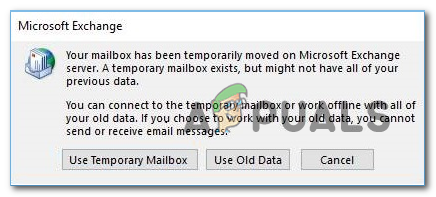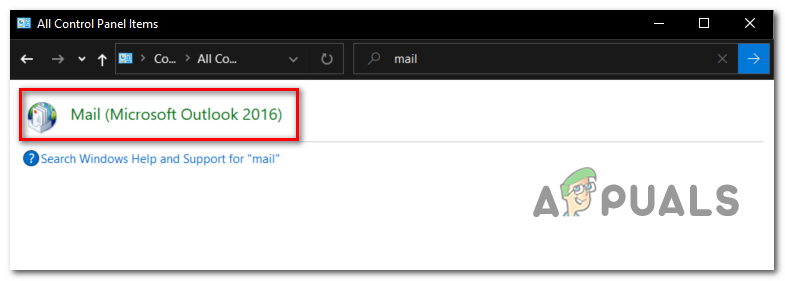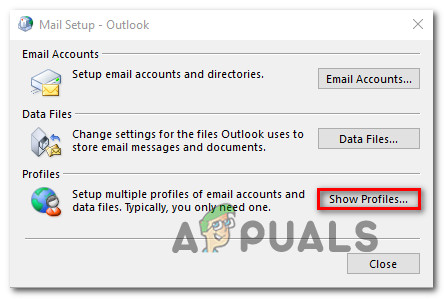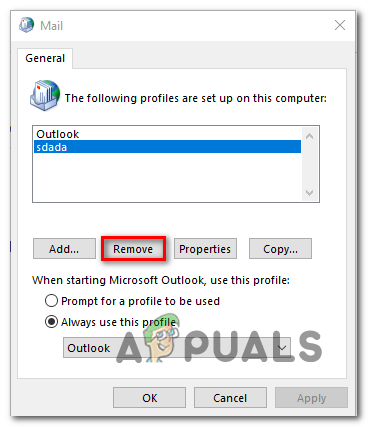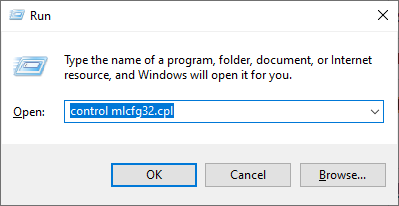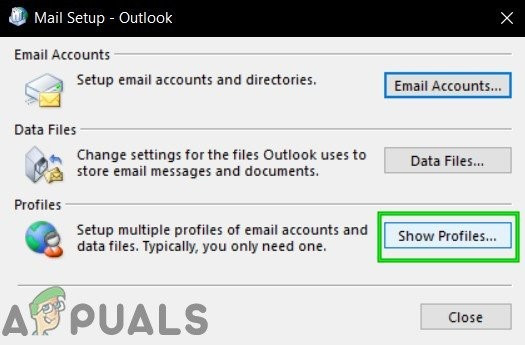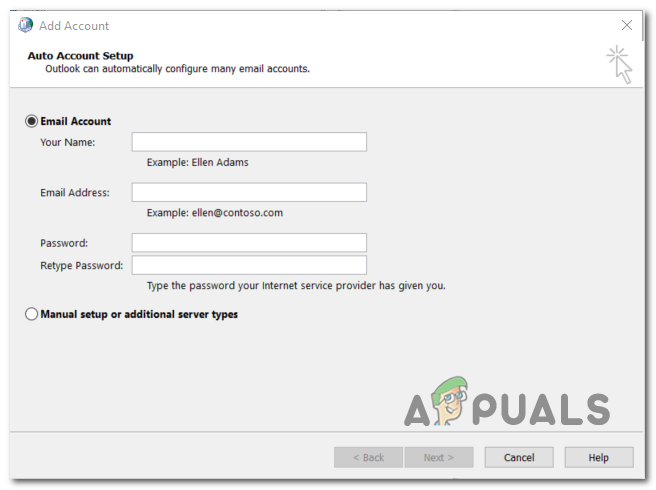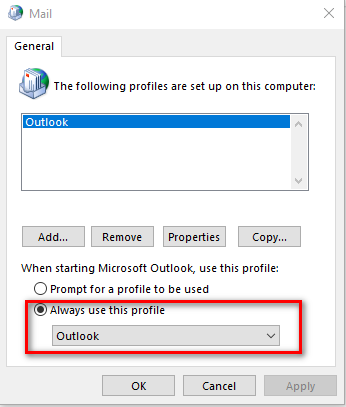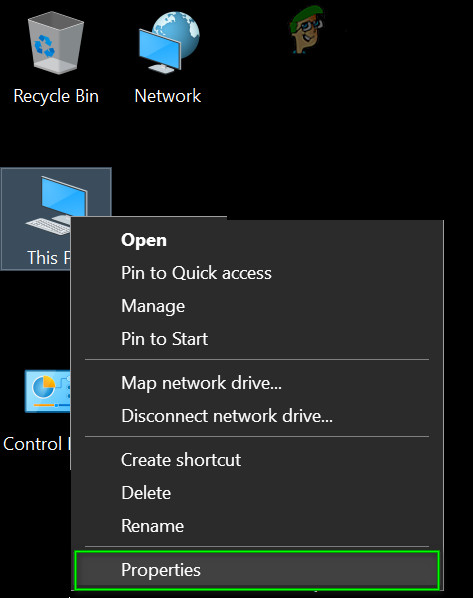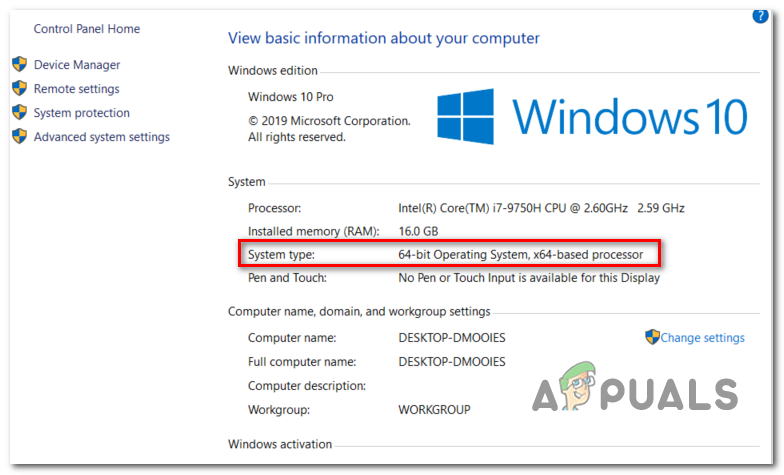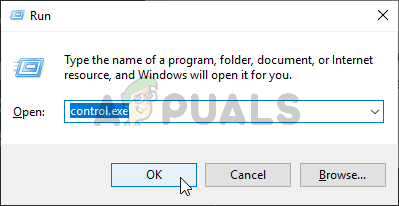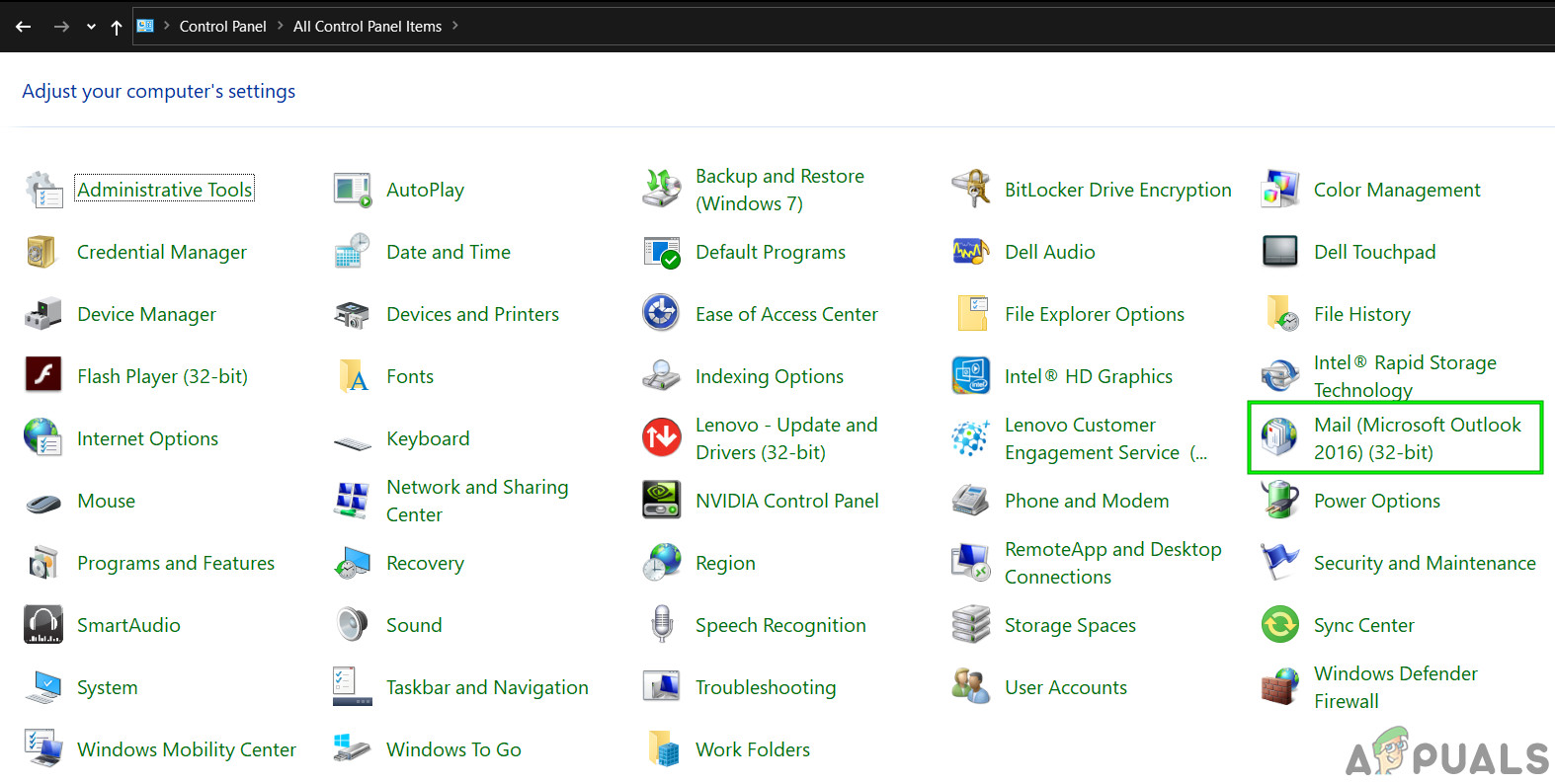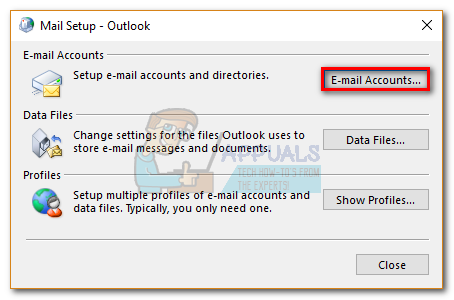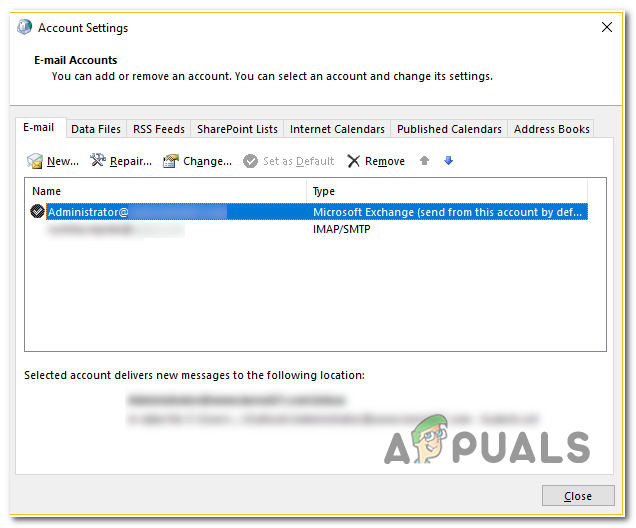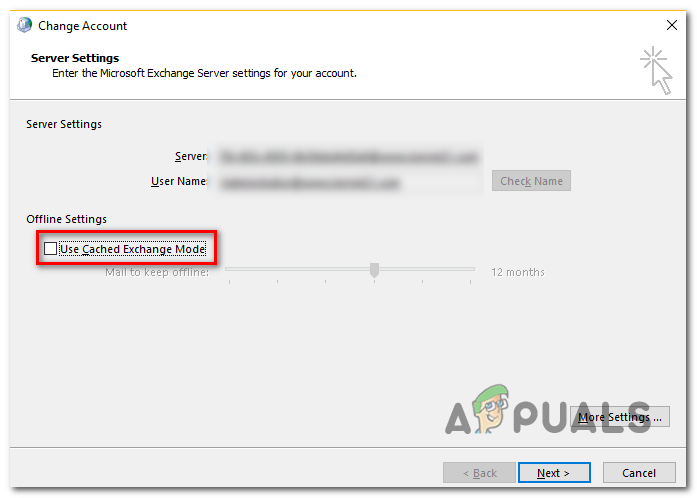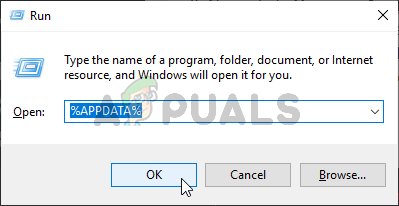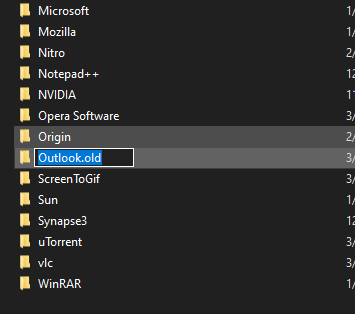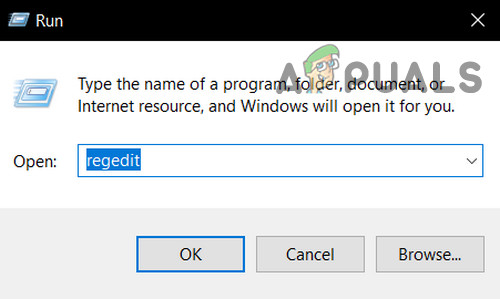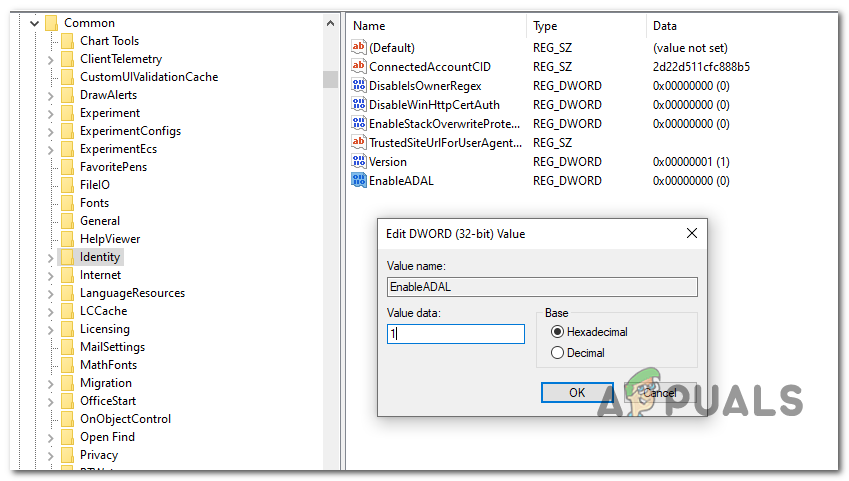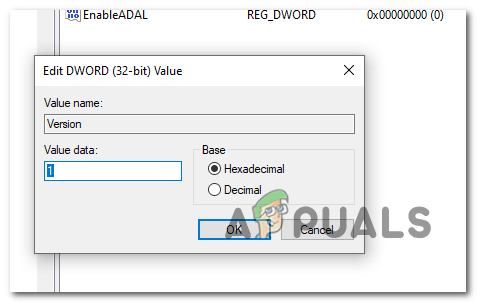If you’re encountering this issue, the first thing you should do is remove any complementary Outlook profile that is stored alongside your active one in order to avoid any conflicts. If that doesn’t work, you should proceed by removing every Outlook profile that’s stored locally and create a new one from scratch that uses the same email account. If you’re using an MS Exchange account, you should be able to fix the error prompt by accessing your email settings and enabling the Use Cached Exchange Mode option from Offline Settings. Renaming the current Outlook profile in order to force the program to create a new instance can also fix the issue if the problem occurs due to some corrupted temporary files. In case you’re encountering the issue with Outlook 2010, you might see this error due to the fact that the KB2878264 update is not installed on your computer (Method 3 will show you how to install it manually). However, if you’re seeing the ‘Your mailbox has been temporarily moved on Microsoft Exchange server‘ error with Outlook 2013 on Windows 10, you might need to do some registry tweaks in order to accommodate Mod auth.
Method 1: Remove any other Outlook profile
As it turns out, one of the most common causes that will trigger the ‘Your mailbox has been temporarily moved on Microsoft Exchange server‘ error is a conflict with one of the other Outlook profiles that are being stored locally. Some affected users have managed to resolve the issue by removing every Outlook profile except for the user’s primary profile. But before you go through with this, keep in mind that when you remove a profile in Outlook, every bit of data for that associated account will also be removed. To ensure that you’re not losing any important data, make sure to back up any information that you need (unless the data is also stored on the server or you are sure that you have no use for the data). Note: If you want to backup your data, go to File (ribbon-bar at the top) > Open & Export > Import / Export > Export to a file, choose Outlook Data File (.pst) and hit Next to complete the operation. After you’ve made sure that you backed up you. PST file or you are certain that you don’t need it, follow the instructions below to remove any other Outlook profile that’s not the primary one: In case you’re still encountering the ‘Your mailbox has been temporarily moved on Microsoft Exchange server‘ error, move down to the next potential fix below.
Method 2: Create a new Outlook profile
In case the first method wasn’t effective, it’s possible that you’re dealing with a partially corrupted Outlook profile that is locally stored. Several affected users finding themselves in a similar situation have reported that they managed to resolve the issue by creating a brand new profile using the same email account and removing the original Outlook Profile. Here’s a step-by-step guide that will allow you to do this: In case you’re still seeing the ‘Your mailbox has been temporarily moved on Microsoft Exchange server‘ error when you attempt to launch Outlook with the newly created profile, move down to the next fix below.
Method 3: Installing the KB2878264 Outlook update
As some affected users have reported, this issue can also be caused in scenarios where the Outlook update KB2878264 is not installed on the Outlook machine. This is only applicable for users that are encountering the ‘Your mailbox has been temporarily moved on Microsoft Exchange server‘ error with Outlook 2010. It turns out that Microsoft already released a hotfix for this issue (KB2878264, pushed through Windows Update). The WU component should have automatically installed it on your machine in case if you haven’t taken any steps to prevent the installations of new updates for your operating system. However, you can also install the update manually through the official channels. here’s a quick step-by-step guide that will show you how to install the KB2878264 Outlook update for Outlook 2010: In case the same issue is still occurring, move down to the next potential fix below.
Method 4: Enable Cached Exchange Mode
If you were already connected with an Exchange account, you might be able to fix the issue by going to your email User Account configuration window and enabling the ‘Use cached Exchange Mode‘ option. This operation has proven to be successful for a lot of users that we’re struggling to fix the ‘Your mailbox has been temporarily moved on Microsoft Exchange server‘ error. Here’s a quick guide that will allow you to enable the ‘Cached Exchange Mode’ option on the email account that you’re actively using for Outlook:
Method 5: Renaming the Outlook folder
As it turns out, the ‘Your mailbox has been temporarily moved on Microsoft Exchange server‘ error can also occur due to some corrupted data present in the main AppData folder of the Outlook application. Some users facing the same issue have managed to get the problem fixed by accessing the AppData folder and renaming the existing Outlook folder in order to force the application to create a fresh folder. This operation will also ensure that you don’t have to deal with any data loss in case the operation is not successful. Here’s a quick guide that will show you how to rename the existing Outlook folder: In case you’re still having the same problem, follow the method below if it’s applicable to your particular scenario.
Method 6: Tweak Registry settings for ModAuth (Outlook 2013 ONLY)
If you’re having the ‘Your mailbox has been temporarily moved on Microsoft Exchange server‘ error with Outlook 2013, chances are you might be able to fix the issue by doing some registry tweaks in order to accommodate ModAuth. If this scenario is applicable and you are using Outlook 2013, follow the instructions below to modify the EnableADAL and Version values in order to fix the issue:
Sending Messages to this Channel has Temporarily been Disabled error on DiscordFIX: Outlook Error 1025 “Invalid Mailbox Name” for Gmail on MacFix: Outlook cannot log on. Verify you are connected to the network and are…How to Fix This Item is Temporarily Unavailable After Reinstalling Your MacOS or…
